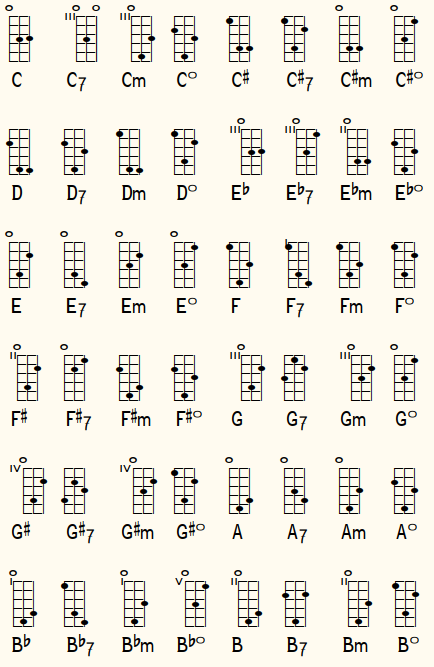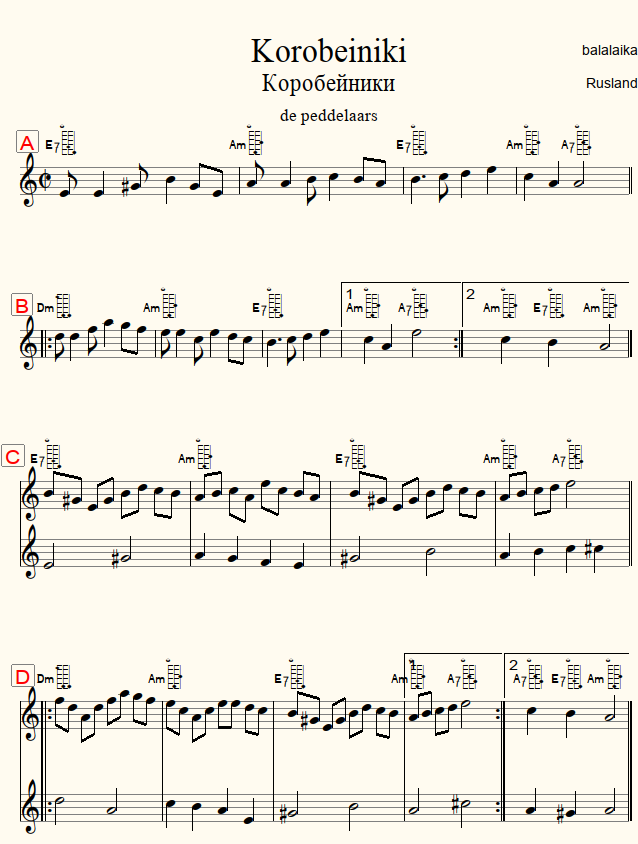Balalaika: Difference between revisions
No edit summary |
No edit summary |
||
| Line 12: | Line 12: | ||
[[File:Balalaika-Korobeiniki-score.png]] | [[File:Balalaika-Korobeiniki-score.png]] | ||
{{NavInstruments}} | |||
[[nl:Balalaika]] | [[nl:Balalaika]] | ||
Latest revision as of 23:47, 12 February 2024
A balalaika is a Russian stringed instrument with a distinctive triangular body and three (usually single) strings tuned E4-E4-A4.
Balalaika chord diagrams can be written manually at chord symbols and chord diagrams near the bar, but that's a lot of work. If the notes already have chord symbols, you can quickly add diagrams to your chord symbols by changing [Part properties|Chord Diagrams] to "balalaika ". For each notated chord symbol, the corresponding grip is found and displayed. In this way, chord diagrams are displayed correctly even after transpose.
Because a balalaika has three strings, you can never play real seventh chords; in all fingerings of chords with 4 or more notes, at least one note is therefore always omitted.
If your balalaika is later replaced by for example a guitar just enter the instrument code "git" and you're done!



